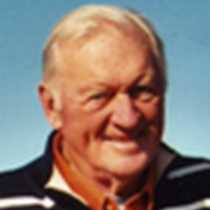Astoria, Oregon
Columbia River history and mystique are related to the river’s changing character, especially near the mouth’s wild, rolling breakers. Known throughout the sailing world for its dangerous bar and treacherous entrance, the Columbia River hosted Sea Bird guests this morning in semi-darkness and fog. Slowly, the ship moved to its slip near the 4.1-mile long Astoria-Megler Bridge that joins the states of Washington and Oregon. Crisp, autumn temperatures accompanied guests as they walked 100 yards to the world class Columbia River Maritime Museum, where with the help of a knowledgeable docent, the river’s mystery and power were described. The Museum, the fresh air, and the overcast skies combined to set a memorable scene at the river’s mouth.
Motor coaches then departed for Fort Clatsop, eleven miles south of Astoria. Besides being the third winter camp of the Lewis & Clark Corps of Discovery (1805-1806), the fort’s log walls provided a damp but cozy setting for Clark to complete his accurate maps and drawings and for Lewis to transcribe rough field notes into leather bound journals. With help from the ship’s historian and Fort Clatsop Park Rangers guests absorbed the story of that westernmost three-and-a-half month’s residency.
While returning to the Sea Bird the historian briefly narrated Astoria’s colorful story: the overwhelming influence of the river; Indian campsites; the arrival of the disorganized Astor party in 1811; British domination when the village was renamed Fort George during the War of 1812; the roistering salmon fishing and canning years of 1840-1900; followed by the decline of fishing, logging and maritime trade. Today, Astoria is brimming with innovative tourism projects, cruise ships come and go, Hollywood movies are made on the steep hills, the waterfront trolley rattles among ancient pilings and cannery sites, and the little city proudly remains the oldest American town west of the Rocky Mountains.
Afternoon excursions included a visit to the Astor Column on 800-foot high Coxcomb Hill which revealed an extraordinary view of the fabled Columbia River bar, followed by a run to the Oregon Coast to roam the American Civil War-era Fort Stevens and gaze at the old shipwreck, Peter Iredale.
Each day this week seemed better than the last. Fall colors and clean air followed the Sea Bird every day. Buttressed by guest and staff lectures each day, the history, natural wonders and future of the Gorge and Snake and Columbia Rivers were real and ever-present.
Columbia River history and mystique are related to the river’s changing character, especially near the mouth’s wild, rolling breakers. Known throughout the sailing world for its dangerous bar and treacherous entrance, the Columbia River hosted Sea Bird guests this morning in semi-darkness and fog. Slowly, the ship moved to its slip near the 4.1-mile long Astoria-Megler Bridge that joins the states of Washington and Oregon. Crisp, autumn temperatures accompanied guests as they walked 100 yards to the world class Columbia River Maritime Museum, where with the help of a knowledgeable docent, the river’s mystery and power were described. The Museum, the fresh air, and the overcast skies combined to set a memorable scene at the river’s mouth.
Motor coaches then departed for Fort Clatsop, eleven miles south of Astoria. Besides being the third winter camp of the Lewis & Clark Corps of Discovery (1805-1806), the fort’s log walls provided a damp but cozy setting for Clark to complete his accurate maps and drawings and for Lewis to transcribe rough field notes into leather bound journals. With help from the ship’s historian and Fort Clatsop Park Rangers guests absorbed the story of that westernmost three-and-a-half month’s residency.
While returning to the Sea Bird the historian briefly narrated Astoria’s colorful story: the overwhelming influence of the river; Indian campsites; the arrival of the disorganized Astor party in 1811; British domination when the village was renamed Fort George during the War of 1812; the roistering salmon fishing and canning years of 1840-1900; followed by the decline of fishing, logging and maritime trade. Today, Astoria is brimming with innovative tourism projects, cruise ships come and go, Hollywood movies are made on the steep hills, the waterfront trolley rattles among ancient pilings and cannery sites, and the little city proudly remains the oldest American town west of the Rocky Mountains.
Afternoon excursions included a visit to the Astor Column on 800-foot high Coxcomb Hill which revealed an extraordinary view of the fabled Columbia River bar, followed by a run to the Oregon Coast to roam the American Civil War-era Fort Stevens and gaze at the old shipwreck, Peter Iredale.
Each day this week seemed better than the last. Fall colors and clean air followed the Sea Bird every day. Buttressed by guest and staff lectures each day, the history, natural wonders and future of the Gorge and Snake and Columbia Rivers were real and ever-present.




